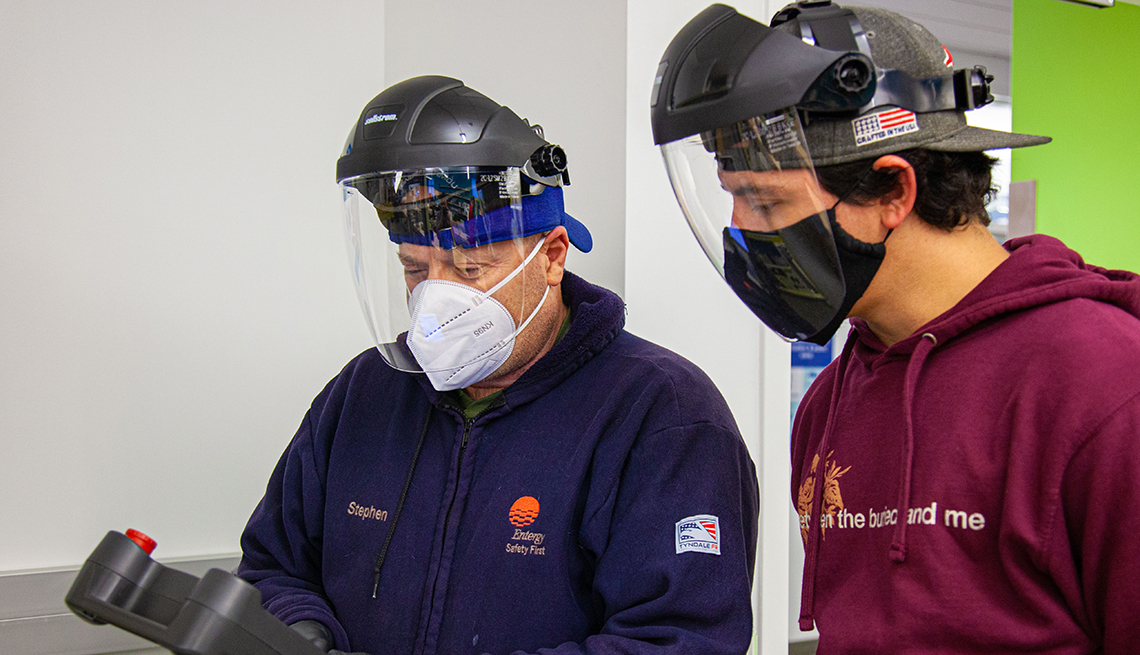Staying Fit
Salt shaker–sized boxes filled with colored plastic pellets glide down a track that bristles with motors, sensors and barcode readers until robotic arms lift and sort them in response to directions entered on a touch-screen keypad.
It's the modern-day version of the noisy, hot and often backbreaking factory assembly line, but this facsimile is in a spotless industrial robotics lab at Quinsigamond Community College, in Worcester, Massachusetts.


AARP Membership— $12 for your first year when you sign up for Automatic Renewal
Get instant access to members-only products and hundreds of discounts, a free second membership, and a subscription to AARP the Magazine.
And the college, as part of a collaboration with AARP that is also being piloted in Connecticut and Florida, hopes that it will soon be buzzing with people age 50 and older who want to change careers or return to the workforce.
The idea is to help older workers and retirees find new jobs at high wages while filling a huge labor shortage in advanced manufacturing.
"If you can do this, you will get a job,” says Damian Kieran, who teaches manufacturing technology at Quinsigamond, adding that he and his colleagues hear several times a week from employers who need workers.
An estimated 4.6 million jobs in advanced manufacturing will need to be filled by 2028, according to the consulting firm Deloitte, which estimates that, if current trends continue, the industry will be able to find fewer than half that many people.
This shortfall exists even though manufacturing workers earn an average of $61,700 a year, according to the Bureau of Labor Statistics.
"They're good-paying jobs,” notes Lee Duerden, associate professor of manufacturing technology at Quinsigamond and coordinator of its Manufacturing Technology program.
Demand for workers high in several states
There are about 6,000 unfilled jobs in manufacturing in Connecticut — home to 4,100 manufacturing companies, including Pratt & Whitney, Sikorsky and Electric Boat — state figures show.
Manufacturers in Florida, including Raytheon, Honeywell and Northrop Grumman, employ 360,500 people, the Florida Department of Economic Opportunity says, and the state is rebounding quickly from a decline in manufacturing employment caused by the COVID-19 pandemic.
In Massachusetts there were 6,185 openings in June for manufacturing production workers, production technicians and machine operators, according to the labor market company Emsi Burning Glass.
Red-brick factory buildings that have largely been converted into advanced manufacturing facilities surround the Quinsigamond campus, on a hill above the Greendale neighborhood of Worcester. One in 4 jobs in the area are in manufacturing, second only to the number in health care, the local workforce board says.
"We don't have old-fashioned low-tech,” says Kelley French, deputy director of the North Central Workforce Board. “We have a lot of hands-on machining, prototyping and large manufacturers."
While manufacturing in the United States is expanding, a quarter of its workforce is 55 and older, the Manufacturing Institute reports. Almost all of the institute's members who responded to a survey said they're especially worried about losing employees to retirement who have institutional experience.
That's a major reason why employers “actively ask for the older students,” observes Kathie Manning, dean of the Center for Workforce Development and Continuing Education at Quinsigamond.
"Our older students are typically our best students,” Kieran says. “They bring the work ethic, and they bring the attitude. And if they've got experience, they can jump ahead."


































































